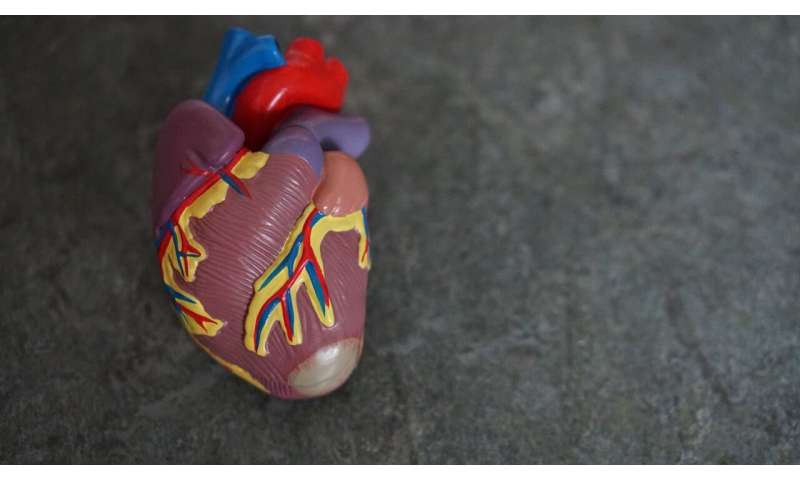A bypass route for the coronary vessels in the heart?

Cardiovascular disease is the leading cause of mortality, and ischemic heart disease is a major cause of death worldwide. Coronary vessels that nourish the heart develop from three main sources, with the endocardium on the inner surface of the hearts blood-filled chambers being one of the major contributors. In normal conditions, the adult heart can no longer generate new blood vessels from the endocardium, because the endocardium-to-coronary vessel transition is blocked by a connective tissue wall beneath the endocardium. In the study published this week, an international team led by researchers of the Wihuri Research Institute and the University of Helsinki show that the VEGF-B growth factor can be used to activate the growth of vessels inside of the heart during cardiac ischemic damage.
This novel finding opens the possibility, that vessels emerging from the inner side of the heart could be further developed for the treatment of myocardial infarction, which results from insufficient delivery of oxygen to cardiac tissue. In normal conditions, blood nourishes the adult heart through coronary vessels. The largest coronary vessels are located on the heart surface, and their branches dive into heart muscle to deliver oxygen-rich blood into the inner parts of the heart. Occlusion of the largest coronary arteries due to atherosclerosis and blood clotting is commonly treated by catheter-mediated reopening. However, any remaining blood clots in the small coronary vessels inside the heart cannot be removed, which can lead to local infarction of the heart muscle. Due to the long distance of blood delivery to the inner myocardium, and pressure conditions during heartbeat, infarctions of the inner myocardium are particularly common in patients with hypertension.
Increasing coronary vessels by using VEGF-B
VEGF-B (vascular endothelial growth factor) belongs to a family of growth factors that regulate the formation of blood- and lymphatic vessels. Professor Ulf Eriksson at the Karolinska Institute together with academy professor Kari Alitalo were the first to isolate the VEGF-B gene in 1996. Together with the research group of professor Seppo Ylä-Herttuala, they previously showed that VEGF-B can induce the growth of coronary vasculature.
Earlier attempts to utilize another growth factor gene, VEGF-A, to grow new vessels in the heart have failed, mostly due to the leakiness of the vessels and increased inflammation caused by VEGF-A, but not by VEGF-B.
“The highlight of this study is that by using VEGF-B, we were able to induce the growth of new vessels from the inner surface of the cardiac ventricles during heart development, and again in adult mice, in the ischemic inner parts of the heart,” says Markus Räsänen MD, Ph.D.
Source: Read Full Article
